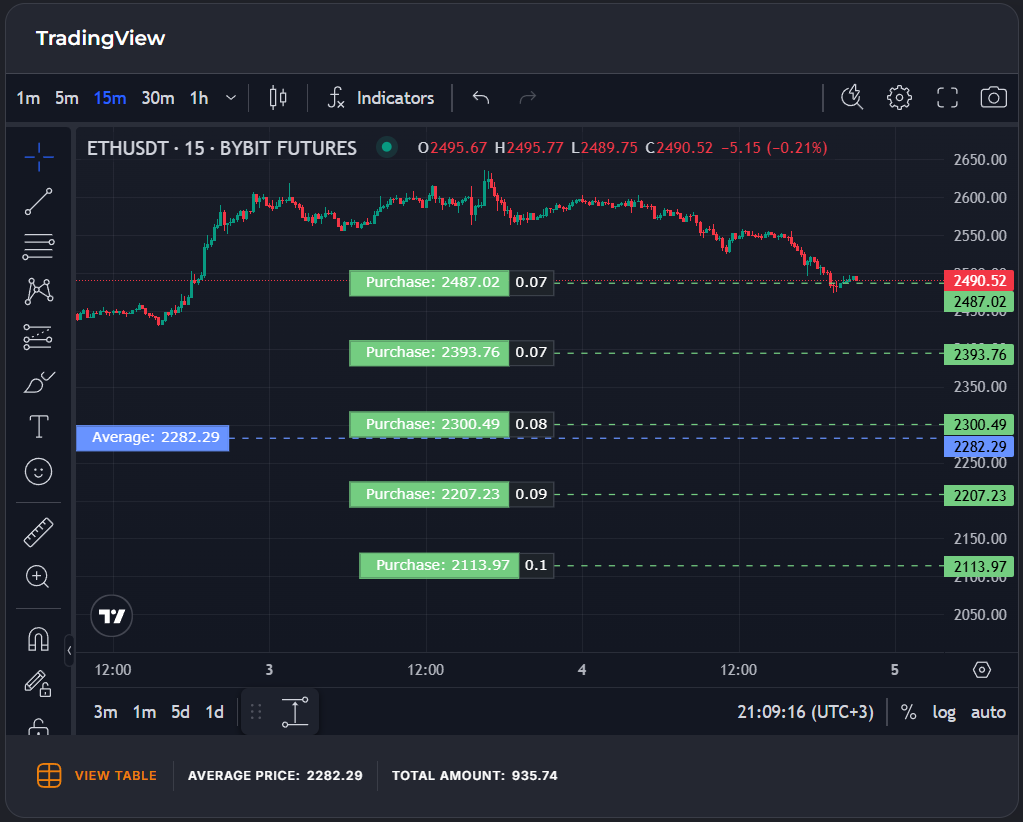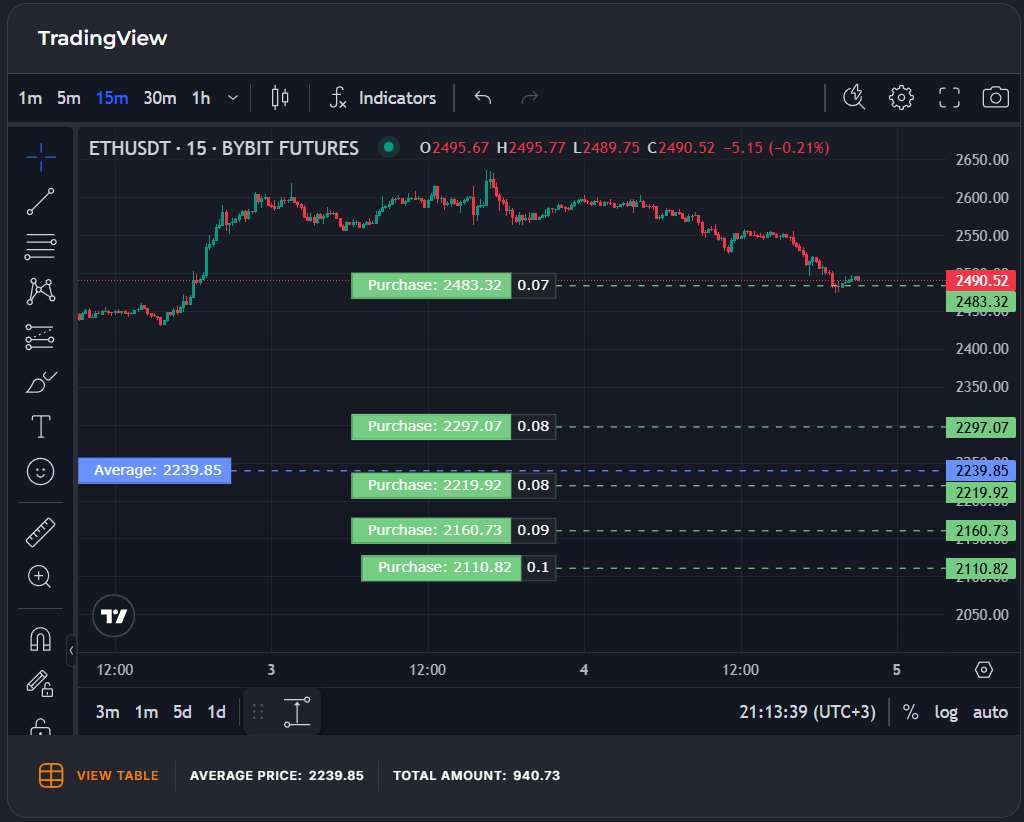Usually, the order grid is calculated that all the order’s prices in it are resided linearly (at the same distance from each other) over the entire price change overlap.
An example of equally distributed orders:

With small market movements, most often only the first orders with the smallest volume will be executed. Most of the deposit isn’t involved in the work. For example, from 10 orders, only 2 – 3 orders will work, this is no more than 30% of the amount allocated to the bot.
To involve more deposit into trading with little volatility, you can use the logarithmic distribution of prices, which will increase the density of orders near the current price and reduce the density of orders away from the current price.
By increasing or decreasing the logarithmic coefficient, you can adjust the density of orders for different situations in different ways. For example, if you want to collect more orders on a rebound, you increase the density of orders as you move away from the current price.
The values of the logarithmic coefficient > 1 will increase the density of orders near the current price (we will involve more deposit in trading with low volatility, which will increase the profit, but we will also increase the risks).
Example (order density near the current price, logarithm = 1.8)

The values of the logarithmic coefficient < 1 will increase the order’s density when moving away from the current price near the last order of the grid (we greatly reduce the risks of trading, the profit will also be less).
Example (order density when moving away from the current price, logarithm = 0.5)

Summary:
The logarithmic distribution allows you to adjust the grid more flexibly based on market conditions and the current asset. You can work both from the upper price and from the rebound to the fall.
This tool helps to improve Veles bots works result.
The main thing is considering the risks and not set the maximum values.






